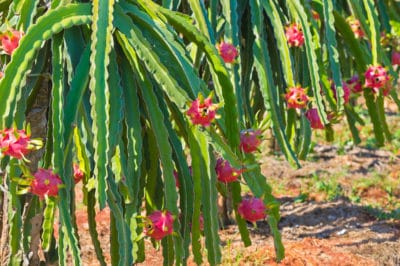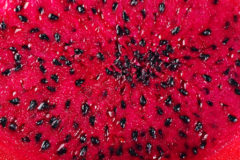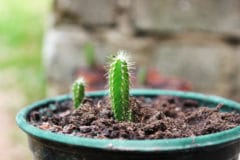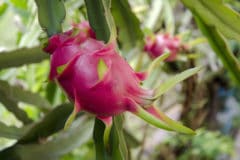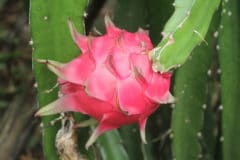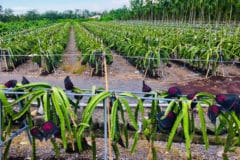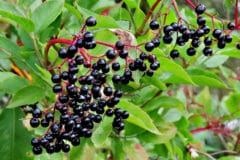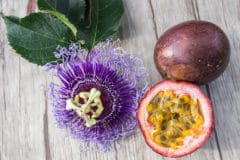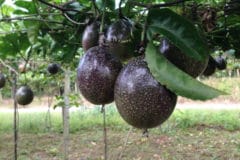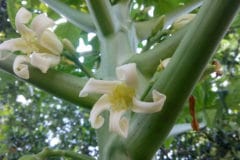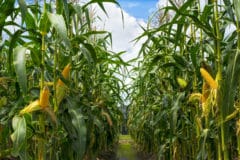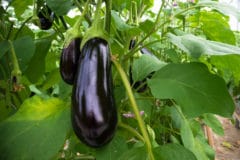All About Dragon Fruit
The climbing cactus known colloquially as dragon fruit can grow 15 to 20 feet tall in its native habitat. The plant flowers at night and blooms last only a day. Dragon fruit has multiple bloom cycles and in the right conditions can produce five or six crops a year. The bright pink or yellow fruits are edible. They may be white or pink inside, with tiny black seeds.
Native Habitat
The dragon fruit is native to Central America and has been found growing wild in southern Mexico, Costa Rica and El Salvador. Other areas where these plants were originally found include Brazil, Colombia, Ecuador, Panama and Uruguay. As these locations indicate, the plant prefers the tropics. As a cactus, however, it needs excellent drainage and is sensitive to over-watering.
Dragon Fruit Climate
As one might expect given its origin, dragon fruit is sensitive to frost. Gardeners in USDA Zone 9 may be able to grow the plant in containers if it can be moved indoors to a sun room or greenhouse for the winter. Those who garden in Zones 10 and 11 can usually grow the plant outdoors, either in containers or in the garden itself.
Dragon Fruit in the Garden
If you live in USDA Zones 10 or 11, you should be able to grow dragon fruit. The plant has the following cultural needs:
- Well-drained soil – cactus mix is best for those grown in containers.
- A strong trellis or similar sport.
- A minimum of six to eight hours of sun.
- Afternoon shade in very hot climates.
Commercial Production
Although dragon fruit is certainly not as common as more conventional fruits, it is often available in specialty stores, Asian groceries and farmers’ markets. Vietnam is the largest commercial producer. Israel, Thailand and Australia grow dragon fruit commercially, although Australia’s production is not sold outside the country. Other Asian countries such as Malaysia, the Philippines and Taiwan grow dragon fruit.
Dragon Fruit in the US
In the US, dragon fruit production is limited but increasing. Southern California is a suitable climate; dragon fruit production in that region grew 10-fold between 2002 and 2013, according to the Agricultural Marketing Resource Center. Hawaii and Florida also produce some dragon fruit. Most of the dragon fruit offered for sale in the US, however, comes from southeast Asia – primarily Vietnam.
